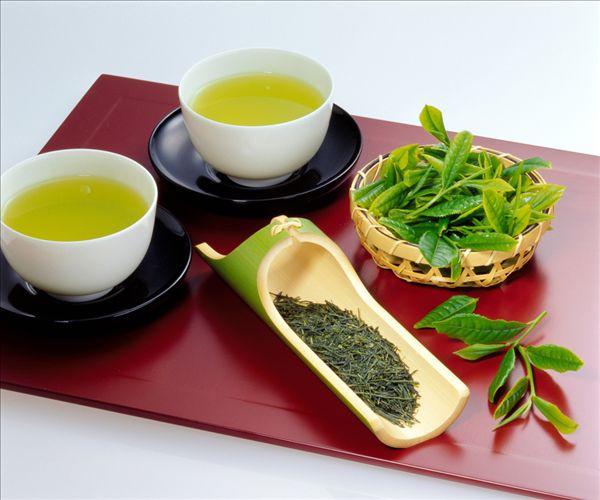Green tea is delicious and very high in antioxidants. It has one drawback, however, and that is its caffeine content, which can surprise and affect some tea drinkers deleteriously. Instead of foregoing the health benefits of this tea, here are some simple and effective measures to enjoy green tea without suffering from its caffeine side effects.
Steps
Know your green tea.The younger the tea leaves, the more caffeine will be produced in the tea. The most prized part of green tea is the terminal bud and the adjacent two leaves, also called the tea flush. They are the sweetest, but also contain the most caffeine. Click here to read Hemorrhoids in TCM.
Color is a poor indicator of caffeine levels - Gyokuro, a top level Japanese green tea, contains more caffeine than a dark tea such as Lapsang Souchong. High grade teas are made from the bud and two adjacent leaves (the tea flush), where the caffeine content is highly concentrated. On the plus side, these are the sweetest part of the tea and also contain the catechins and the theanine (mentioned below).

Become familiar with your level of tolerance. Many experts recommend consuming no more than 300 milligrams of caffeine a day. When compared to black teas, coffee and soft drinks, green tea has been found to provide a gentle and steady source of stimulation and there are few reports of common caffeine side effects, such as nervousness or headaches. To realize the cancer-fighting benefits of green tea, researchers generally agree that drinking 14-16 ounces (415-475 mL) per day is reasonable. If there's an average of 30-60 mg of caffeine per a 6-8 oz cup of green tea, drinking the recommended amount translates into 90-105 mg of caffeine per day (much less than 300 mg), and even that caffeine level can be reduced by following these instructions.
Avoid green tea teabags. Green tea teabags contain a lot more caffeine - and you will suffer some loss of quality as the teabags are poorer in flavor than the loose green tea leaves. Try to buy loose green tea leaves. You can use the same high-quality leaves three times before throwing them away, so after you've thrown out the first infusion (as described below), you still have two more cups of green tea to enjoy.
Start slowly. One cup of green tea can contain anywhere from 15 to 75 milligrams of caffeine. The best thing that you can do is to try green tea in small doses and monitor your own reactions. Start with a half of a cup per day and increase the amount gradually, observing your reaction to the increase and adjusting accordingly. If you feel calmly stimulated and content, you will know that green tea works for you.
Brew your green tea half strength. This can be a helpful solution if you are suffering from caffeine intolerance. Purchasing loose green tea will allow you to adjust how many leaves are brewed in your tea. Most people brew approximately one to two teaspoons of loose green tea per cup; you can try cutting that in half. If the resulting brew is too weak, increase it little by little. Click here to read Fatty Liver in TCM.
Throw away the first infusion. Caffeine is quicker to dissolve than the other tea compounds. Throw away the first infusion, as it soaks up 70% of the caffeine within the first five minutes. The length of the first infusion can affect the strength of the second infusion--the longer the infusion, the blander the next, but also the lower the caffeine presence. Try to find the longest first infusion time that still preserves enough green tea flavor for your liking. Click here to read Enlarged Spleen in TCM.
Drink it hot. Green tea contains catechins (location of the antioxidants) and theanine (provides sweetness and freshness) that reduce caffeine activity. Brewing green tea allows these molecules to combine with caffeine in hot water, rendering the caffeine less effective. If you let it cool off too much after brewing, the catechins break down and more caffeine is released.

![Diseases, Symptoms, tcm, [tcmwindow.com]](/uploadFile/adImg/2015/4/24/6de633b8-0a7a-4546-868a-02389edf5c65.png)





